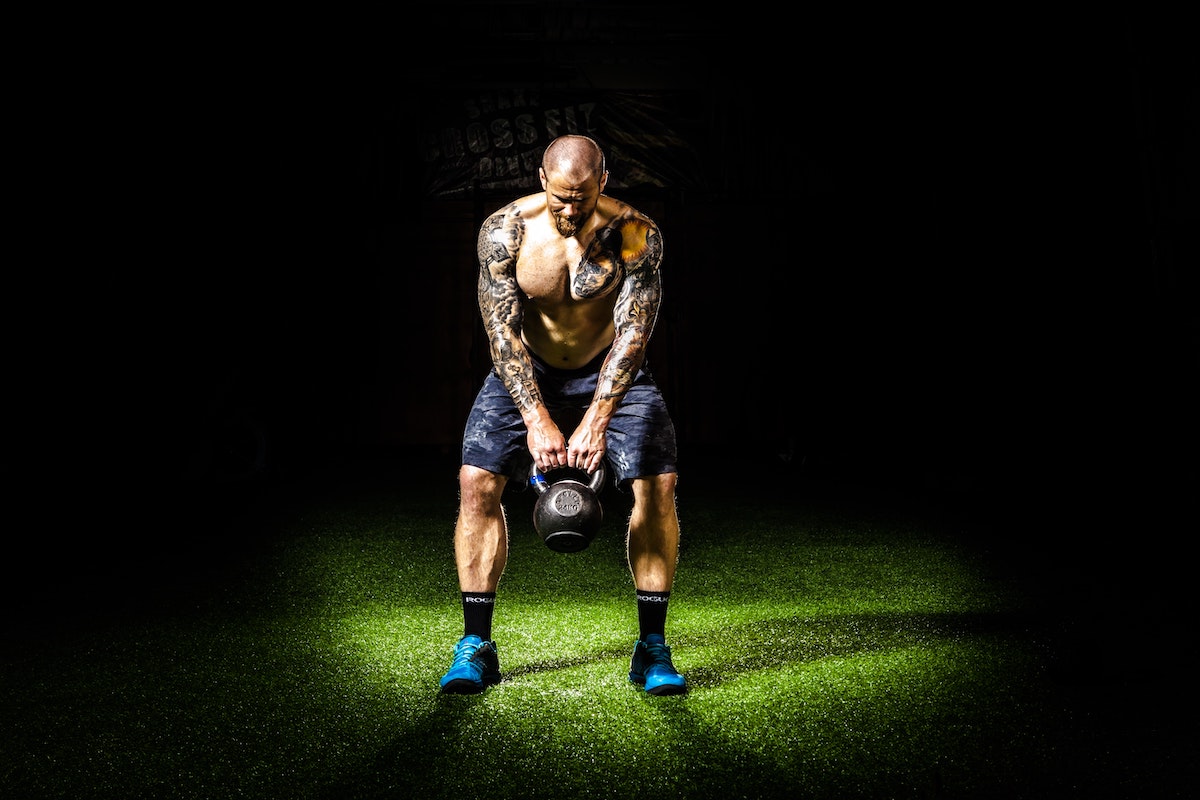
The fitness space has become a fancy one with luxury equipment, studio classes, and complicated gadgets like a Pilates reformer becoming more popular. Seemingly gone are the days when we’d lace up our sneakers and run around the block or pick up a humble pair of hand weights. Though you may see kettlebell workouts during a nightly scroll through Instagram and TikTok, the truth is the handheld balls with a single handle attached have been mainstays in a personal trainer’s toolbox for a long time. Kettlebells USA traces the history of the piece of equipment to early-1700s Russia.
The kettlebell is a handy piece of equipment with more versatility than a burpee. A kettlebell workout can build strength, endurance, balance, and flexibility. Kettlebell exercises can get cardio without running or cycling and engage multiple muscle groups for a full-body activity.
Ready to pick up a kettlebell and get started? Here’s what novices need to know first, including a five-move beginner kettlebell workout.

What weight kettlebell should a beginner use?
Generally, a man new to kettlebell workouts should start with one that is 16 kilograms or about 35 pounds. However, other factors may play into the best kettlebell weight for a beginner. For instance, if you’ve been strength training with dumbells for years, your baseline is likely higher than someone hoping to start pumping iron with a kettlebell. The number of reps and any underlying health issues can also affect your starting kettlebell weight. For the latter, speak to a doctor before starting with a kettlebell.

Are kettlebell workouts suitable for beginners?
Kettlebell workouts can be a great addition to a fitness routine, regardless of your experience with one. Kettlebell workouts can build full-body strength and endurance, serving as a cardiovascular activity that benefits the heart and overall health. Adding a kettlebell to your routine can spark interest and prevent you from getting bored with bodyweight or dumbbells.
As a beginner, you’ll want to remember that Rome was not built in a day. Start with a lighter weight (typically around 34 lbs., but you may be able to go higher or need to go lower). Try beginner kettlebell workouts first, focusing on good form to prevent injuries and get the hang of the tool. A personal trainer can be valuable in helping you develop a routine with kettlebells that works for you and enables you to meet your health and fitness goals.

Can I lose weight with kettlebells?
Exercise is vital to any weight-loss puzzle, and kettlebells can be a great addition to any fitness routine. However, there are no magic solutions for weight loss. Diet, exercise, stress management, and proper sleep are all critical. Unfortunately, many men will find they cannot skip eating nutritious foods or getting 7 to 9 hours of sleep per night just because they did a kettlebell workout.
Additionally, cardio exercise is essential. If you’re doing kettlebell workouts that are mostly standing still, you’ll want to add cardio, such as running or cycling, into your routine.
Finally, everyone’s body is different. Other factors, like metabolism and genes, may affect your ability to lose a certain amount of weight. Medications may help obese or overweight individuals with an underlying condition like high blood pressure lose weight. Speak with your doctor if you are concerned about your weight or overall health, and remember that you are more than the number on the scale.

5 kettlebell exercises for beginners
Ready to pick up a kettlebell and supercharge your fitness goals? These five moves will get you started.
Kettlebell swings
The explosive nature of kettlebell swings makes the move perfect for high-intensity interval (HIIT) workouts and building cardiovascular strength. The full-body, heart-thumping movement engages the posterior chain, primarily the back and hips.
- Bend down by squatting to pick up the kettlebell (this strategy prevents back strain). Hold the kettlebell in front of your body with both hands on the handle.
- Stand tall with feet slightly wider than shoulder-width apart, with a slight bend to the knees.
- Keeping the back flat, slightly hinge at the hips as you swing the kettlebell back and between your legs.
- Drawing on your momentum, stand, pushing your hips forward as you engage your glutes and core, and swing the kettlebell to shoulder height.
- Swing the kettlebell down.
- Do three sets of 5-10 reps to start. Avoid resting for more than 30 seconds between reps.
Goblet squat
You may have done a goblet squat with a dumbbell, but the move also works well with a kettlebell. Another kettlebell workout for beginners that engages multiple muscle groups, the goblet squat builds strength in the core, arms, glutes, calves, and quads.
- Stand with toes facing slightly outward and a little wider than hip-width distance apart. The kettlebell should be in both hands.
- Bend at the elbows to move the kettlebell up to your chest with one hand on each side of the handle.
- Tuck your belly button.
- Keep your eyes forward and the kettlebell next to your chest as you lower your hips until they parallel your knees.
- Slowly return to standing, squeezing your glutes as you reach the time.
- Do three sets of 10-20 reps.
Kettlebell deadlift
Deadlifts generally work lower-body muscles like the hamstrings and glutes. Adding resistance to a deadlift, such as a kettlebell, builds functional back and shoulder strength that can help you lift heavier items around your home.
- Place the kettlebell on the floor just in front of you. Your feet should be shoulder-width apart.
- Hinge at the waist, pushing the glutes back as you engage the muscles. Lower your midsection, engaging core muscles as you hinge. Keep the hips and back in a neutral position.
- Keep tension in your arms as you grab the kettlebell with both hands. Lift the kettlebell, rolling your shoulder blades back and down to prevent them from creeping toward the ears.
- Lower the kettlebell back toward the floor.
- Lower your leg back down.
- Do 3-5 sets of 10-20 reps.
Overhead press
You can do an overhead press with one or two kettlebells. If you’re doing the singlehanded version, you’ll finish your reps and then repeat on the opposite side to complete a full set. This kettlebell exercise emphasizes shoulder, tricep, and upper-back strength.
- Stand straight with feet hip-width apart, a slight knee bend, and the kettlebell racked in your left hand.
- Raise the kettlebell above your shoulders, pressing the weight overhead and toward the ceiling.
- Stop when your arm is almost straight (keyword: Almost. Keep a slight bend to avoid locking elbows).)
- Repeat ten times. Then, do your right side. Complete 3-5 sets of 10 reps on each side (or 3-5 sets of 10 reps with two kettlebells).
Reverse lunge
You’ll want two kettlebells for this move. Though a reverse lunge mainly works the glutes, quads, and hamstrings, the kettlebell adds the challenge of extra resistance.
- Grab a kettlebell with each hand and place feet shoulder-width apart.
- Step back about two feet with your left foot. Place the ball of your foot on the floor, but keep your heel raised.
- Bend both knees into 90-degree angles. Keep the back straight and look forward.
- Hold for 2-3 seconds.
- Return to start. Repeat on the other side for one rep.
- Complete 3-5 sets of 10 reps on each side.
If you have questions about kettlebells, speak with a personal trainer.



